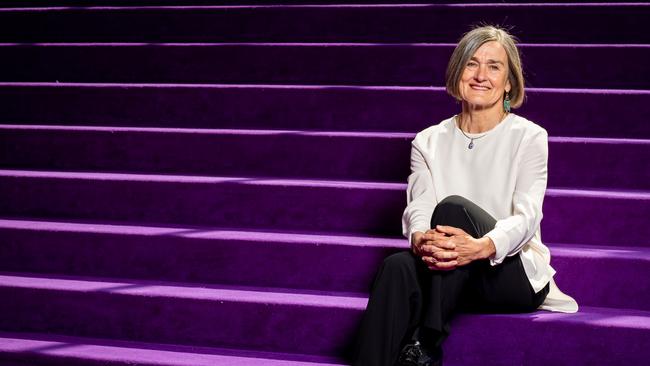Business needs to check out the leaders of our big arts groups
The Opera House chief on how the men in suits no longer run the show at the iconic institution.

There were days when the pandemic felt like an extinction-level event for the arts, at least for arts companies. Lockdowns threatened any organisation that thrived on community: performing arts organisations in particular were among the first to close and the last to reopen. When audiences disappeared, a rapid recalibration took place. Some companies offered content online, others found new ways to keep artists and audiences engaged while others began to interrogate the fundamentals of their business.
We’re not out of the woods yet. The number of tourists coming to our institutions remains a long way behind pre-pandemic levels. But as we adjusted to the most unpredictable operating environment in our lifetimes, I was inspired by the ingenuity and leadership of my cultural colleagues, across the state and around Australia. I watched with admiration as they found creative solutions to seemingly impossible problems, balancing the interests not only of audiences and artists but also staff and supporters, and then I watched as their organisations emerged strong and agile when the country opened up again.
Especially inspiring was the realisation that most of these executives were women. From opera to theatre, cultural centres to major festivals, even the government departments responsible for the arts: you can’t help but notice who is in charge. In 2023 Australia, you’re more likely to find a woman sitting behind the CEO’s desk at our top cultural organisations than at any time in our history. It’s a fabulous statement about ability and effectiveness.
With International Women’s Day having been upon us this week, it’s instructive to consider the state of leadership in Australia’s arts community. In Sydney, where I’m based, women hold CEO or executive director roles at, among others, Sydney Theatre Company, Sydney Dance Company, Bangarra, Sydney Philharmonia Choirs, Bell Shakespeare, Griffin Theatre, Ensemble Theatre, Powerhouse, Museum of Contemporary Art, Australian Museum, NIDA and Create NSW. The picture is similar interstate, especially south (Melbourne Theatre Company, Melbourne Recital Centre, Melbourne Symphony Orchestra, Arts Centre Melbourne, Victorian Opera, Malthouse, Creative Victoria) and north (Queensland Theatre Company, Queensland Ballet, Queensland Symphony Orchestra, Brisbane Powerhouse) and nationally (Opera Australia, Musica Viva, The Australian Ballet). In many cases, as with OA, QTC and Bangarra, the artistic directors are women as well, and many of the boards are also led by women.
The list goes on but the trend is clear. That doesn’t mean there’s not a long way to go in lots of areas. We need to promote more First Nations and people of colour to our executive teams, and the pay gap needs attention as well, but I’m heartened by the presence of women at the apex of our major cultural institutions. There are clear challenges, and we’re all up for them.
A recent survey by Chief Executive Women showed just 19 per cent of ASX200 companies had gender-balanced senior leadership teams. There have been developments since that report – Leah Weckert, for example, was named CEO of Coles last month – but the proportion of women in management roles, let alone as CEOs, indicates a broader corporate culture that still needs further change.
One way to do this is to listen to the community around us. This weekend, the Sydney Opera House hosts the 11th edition of All About Women, our annual festival about gender, equality, power and justice … 11 years of conversations that no longer take place on the margins but at the very heart of Australia’s most iconic cultural institution.
But in 1973, when the Opera House opened, it was men in suits as far as the eye could see. Apart from a single woman on the board – the indefatigable Lady Dorothy Macarthur-Onslow – a cursory glance through the 1973-74 annual report reveals all nine departmental heads were men. I don’t point this out to question their abilities. But the gender balance was a bit off.
Today, women make up 62 per cent of the senior leadership team at the Opera House, with my role as CEO sitting alongside Lucy Turnbull as chair of the Opera House Trust. In our 50th year, we’re trying to create a version of the world we want to see – one where my granddaughter Esther doesn’t even question whether her gender will inhibit her ambition, and her ability to realise it. And it’s wonderful to know we’re not alone. Because when it comes to leadership, the arts, once again, are leading the way.
Louise Herron AM is the chief executive of the Sydney Opera House.


